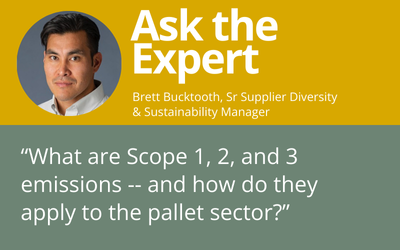Ever wondered about the true environmental impact of your favorite products or the company you work for?
Guided by our drive to be the most innovative, efficient, and morally sound company we can be – and as we continue to be guided by our Seventh Generation philosophy (key among them being “Respect,” “Integrity,” and “Stewardship”) – Ongweoweh has most certainly pondered this question.
Moreover, we’ve taken action – by making great strides in actually minimizing our footprint. This, in turn, has led us seek an understanding of the most commonly accepted industry standards for measuring our environmental impact, namely those established by the Greenhouse Gas Protocol (GHG Protocol).
The GHG system categorizes a company’s environmental impact across an organization’s entire value chain, separated into three scopes: Scope 1, Scope 2, and Scope 3. Let’s break down what each means and how they contribute to a company’s total footprint.
Scope 1: Direct Emissions – those generated ‘under your roof’
Imagine a pallet manufacturing outfit as an example. Scope 1 would relate to all the emissions generated by or within the facility itself, including:
- Furnaces or boilers used for heating
- Gas, oil, propane, or diesel-powered manufacturing equipment or machinery
- Gas, oil, or propane-powered forklifts or vehicles (including delivery trucks)
- And refrigerant leaks (e.g., air conditioners and refrigerators can leak harmful coolants during operation or repair)
- Perhaps others
Scope 2: Emissions Stemming from the Power You Buy
Sticking with the pallet industry, it’s rare that any sort of facility focused on manufacturing, recycling, down-cycling, distributing, or storing pallets will generate its own electricity. (Maybe there are a handful that generate their hydroelectric power or run some type of co-gen.) That means most operations in our industry buy their electricity from the grid, in which case those emissions associated with generating that electricity are considered Scope 2 emissions. In other words, even though your company isn’t burning fuel to generate electricity, those emissions – however distant – must still be accounted or factored into the equation.
Scope 3: The Big Picture Impact
This is where things get interesting! Scope 3 captures all the other indirect emissions that occur throughout a company’s value and supply chain (including both up- and down-stream vendors). Not surprisingly, this is the broadest category; it’s also the trickiest to define (after all, how can you measure and quantify such ‘vague’ activities especially when they relate to someone else’s business and are, thus, out of your control?); and it can also be the most significant.
Circling back to our pallet manufacturing plant, Scope 3 emissions might include those stemming from:
- Forestry operations: Including all equipment and/or transportation related to planting, pruning, cutting, etc.
- Metal production: That is to say activities related to metal fasteners used in pallet-making (i.e., mining, forging, manufacturing).
- Milling and manufacturing: Such as debarking, sawing, planing, edging, kiln drying, chemical treatments, etc.
- Shipping, distribution, materials handling, and other forms of transportation related to the above or other operations — including employee commutes!
- End-of-life treatment and waste disposal of sold products.
Why Do Scopes 1, 2, and 3 Matter?
Understanding one’s impact across all three scopes provides a much clearer picture of its environmental footprint. As a result, knowing the ‘outputs’ of all scopes allows you to identify areas for improvement and focus their efforts on reducing emissions.
For example, to reduce its Scope 2 emissions, a pallet manufacturer might decide to switch to (or at least weave into its power-purchasing regimine) a renewable energy supplier. Or partner with timber suppliers closer to home (and thus less reliant on long-haul trucking).
Additionally, accounting for GHG standards and practices can help companies like ours, our channel partners, and even our customers manage risk: By measuring emissions in the value chain, all of us better identify and prepare for risksfrom supply chain disruptions and price volatility such as resource scarcity, market failures, and natural disasters. Furthermore, it can help a company avoid threats associated with stakeholder or regulatory pressures, decreasing demands for polluting products, and asset devaluation
What Ongweoweh is Doing In Terms of Tracking and Improving Its Emissions
Recognizing that the quest for sustainability is an ongoing effort, Ongweoweh is committed to managing and improving its impact in the realm of GHG and Scopes 1, 2, and 3 outlined here.
A notable example – and an important step in the process – is our [ongoing] Energy Audit. More specifically, Ongweoweh recently met with a local third-party assessment organization to conduct an onsite energy audit. This study was performed to understand how Ongweoweh’s facility is currently using energy and to identify ways to reduce energy use and operating expenses. The energy audit and sustainability report provided exceptional feedback. And included insight that will assist Ongweoweh to the next phase of decisions to improve energy efficiency in our facility. (We’ll be sharing results from this audit in future blogs.)
Still that’s just one in a long line of efforts we’ll be making – and asking our partners to make with us – in the months and, yes, years ahead!
Coming soon: In a future blog, we’ll dig deeper into other ways Ongweoweh is pursuing in the challenging Scope 3 arena! Stay tuned!

